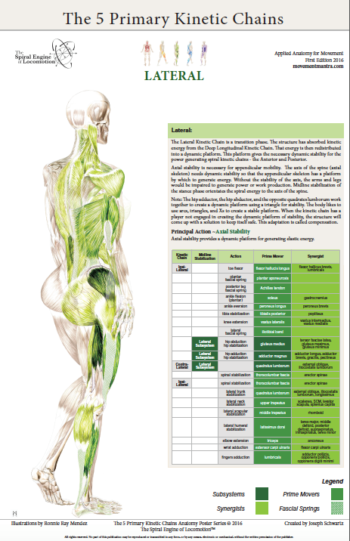
The stability or mobility question has been brought to the table many times. Which is more important ~ to be stable or to have mobility?
There are different perspectives to the answer depending on one’s field of study, the application, and the lens that you look through.
Here is my take: stability and mobility are in an interdependent relationship. One can’t effectively happen without the other.
Stability and mobility rely on each other to keep the structure safe. Stability is to software as mobility is to hardware. Stability requires motor control, the ability of the nervous system to respond appropriately as movement occurs. Mobility is the hardware, the organization of bones, joints, ligaments, tendons, muscles and fascial structures. The structure is responding to movement, messages of how movement is occurring, and how this information is being relayed up to the motor control center. A strategy is then derived as a response to the changing environment. The quality of movement being expressed is a product of integration of both stability and mobility.
Dynamic Stability is perhaps a better term to describe the product of stability and mobility. The question then shifts from “stability or mobility” to whether the body can appropriately respond to movement over a complete range of motion and a changing environment. For example, if you are hiking a steep loose trail, and the earth shifts under your feet, is the responsive mobility available for you to keep from losing footing and possibly spraining an ankle?
Dynamic Stability keeps the structure safe. The result of stability + mobility is neuromuscular integration that is available to respond appropriately to a complete range of motion. When life happens, and the environment shifts in an unforeseeable way, dynamic stability ensures an appropriate response is available.
In the movement known as the walking gait, the Lateral Kinetic Chain completes this dynamic platform. The body has just absorbed the kinetic energy through the deep longitudinal kinetic chain, the strike phase of the gait. That energy now needs to be grounded into a stable yet dynamic platform, the lateral kinetic chain, that will allow the body to generate the next movement, the power generation of the posterior spiral kinetic chain. The axis of the spine is integrating all three planes of motion while centralizing the energy from the previous shock absorption phase. As a result of dynamic stability, the body is prepared to generate propulsion, the forward motion of the walking gait.
The midline action of maintaining balance is another important action of the lateral kinetic chain. Complementary neuromuscular activations are working in cooperation to balance the relationship of movement, kinetic energy, gravity, and ground force reaction. These complementary actions provide the dynamic base so that the appendicular skeleton can generate energy.
Movement is a balancing act between environmental factors and the structure’s ability to respond appropriately. For example, when we look at the sculpture of rock stacking, we see the dance between the unique attributes of each rock. The size, shape, and center of gravity of each influences the balance point. Each rock complements the previous. The balance points create an axis, an axis of stability. Without this axis, the stack of stones would fall.
This demonstrates the third principal action of The 5 Primary Kinetic Chains ~ Axial Stability for Appendicular Mobility. When a dynamic base is in place, the appendicular skeleton can express its potential of generating stored elastic energy in movement.
